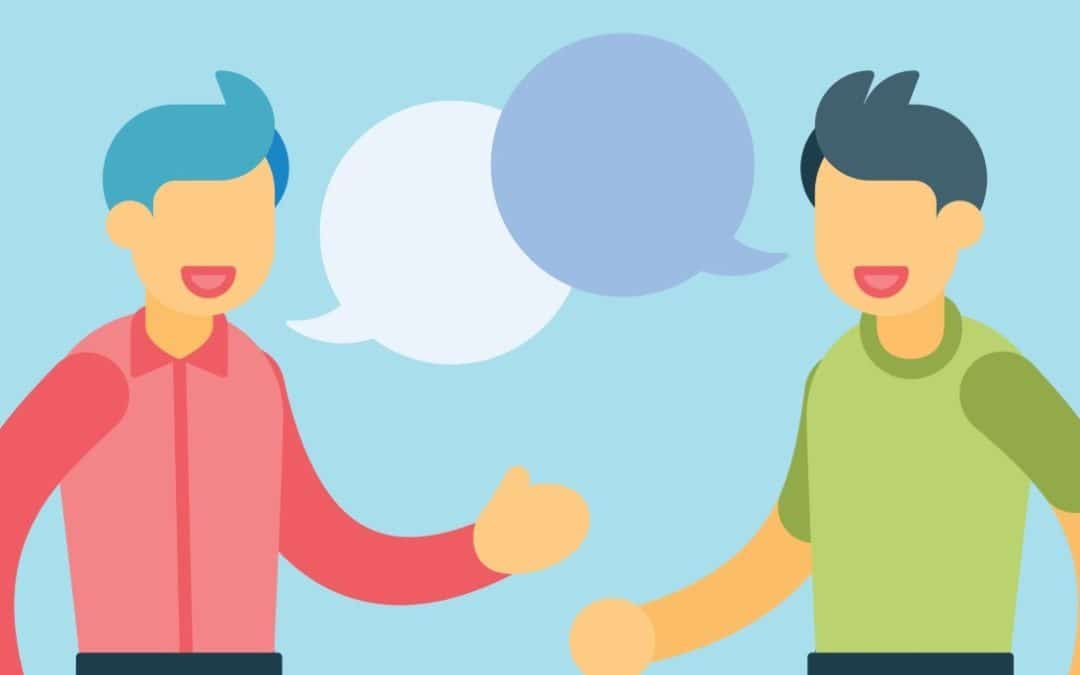
Simply said: “Once you have created a fruitful conversation, it is easier to start the next conversation.”
So how do you start these conversations?
Conversational Muscle Memory, Starting Small
Conversational muscle memory is based on the idea that when you start small, low-risk conversations throughout the day, it is easier to start more conversations because you have generated momentum.
With this momentum developed, it is easier to start a conversation with the person you really want to talk to
Imagine you start the day with a coffee at the nearby coffee shop. The person in front of you is looking at the food behind the glass cabinet. They seemed undecided.
- You: “Go with the blueberry bagel. It is my favorite.”
- Them: “Hehe, there are too many options, I can never decide.”
- You: “Just buy them all.”
- Them: “Haha, then I might need to take a day off.”
You arrive at the counter to purchase your order.
- You: “What time are you start work this morning?”
- Cashier: “Oh, I arrived at 5:30.”
- You: “What! It’s too early for me. I need my beauty rest.”
- Cashier: A Smile – “Well, I am kinda an early riser, so this works for me I guess.”
You take an Uber to work.
- You: “Hello, how are you this morning?”
- Uber driver: “Well, I just started.”
- You: Do you think you’ll be busy all day? “
- Uber driver: “Maybe, there is a convention going on in the city today.”
There are three new conversations and have not even arrived at work yet, and probably made some people feel noticed.
These conversation initiators are not particularly elegant. There is no perfect line. The most effective beginners simply use the situation or the shared environment and voice observations.
Why does conversational muscle memory work?
Procedural memory.
Procedural memory is created by learning a skill or performing a task that we usually remember automatically. We generally do not have to consciously think about how to ride a bicycle or play an instrument. We just go through the procedure after we learn how to do it.
After practicing conversational muscle memory, you won’t need to think about it as it will flow more freely.
This will create a cycle where the conversation starts automatically.
But what if you feel nervous when starting a conversation?
well, that makes you normal and most people feel anxious before starting their first conversation of the day.
It also helps to reframe the word “anxiety” with the word “anticipation”
When I anticipate something, it completely changes the game. Suddenly, I can change from resistance to acceptance. It makes the interaction more interesting.
This subtle change also changed my attention from myself and my internal state to others and the surrounding environment, which is so helpful while in conversation.
But what about other people? Won’t you think I’m weird for starting conversations with people?
Not really, they are too busy thinking about themselves and their own self-consciousness. There is this concept called the “focus effect”. which is people’s tendency to overestimate the extent to which others notice aspects of their behavior.
How do you start using conversational muscle memory?
There is a simple framework called If-When-Then that allows you to start immediately.
Simply put: the If-When-Then strategy gives you an immediate plan for new behavior.
Example:
- When I have coffee at the coffee shop, if there is anyone in line, I will start a little conversation with them.
OR…
- When I go to work, if there is someone near my desk, I will start a small conversation
Using the If-When-Then framework will help you automate.
Action steps: In five minutes, brainstorm and discuss two typical scenarios in which If-When-Then can be used.
When I __________________, if someone ___________________, then _____________________________.
Make this script your safety net so you can start any number of conversations.
Now that you have several tools in the utility belt, what is the next step?
Tomorrow, use conversational muscle memory to start two (or more) small conversations.
And incorporate conversation threading if when you want to take if further.











Trackbacks/Pingbacks